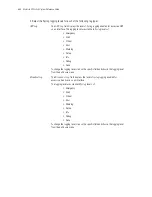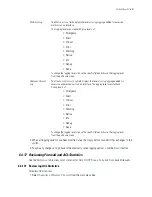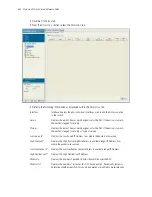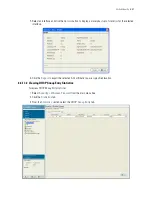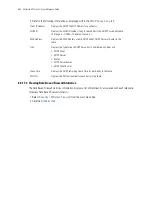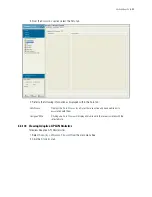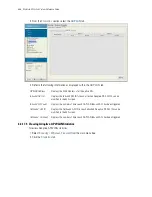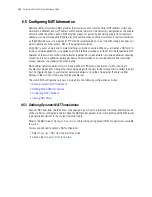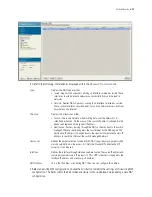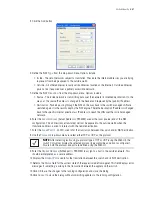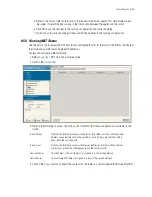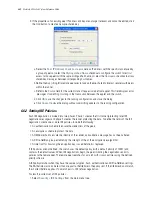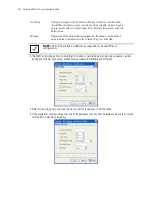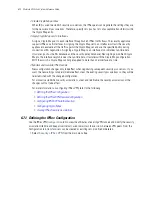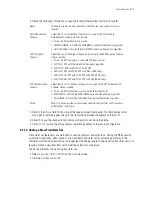
6-62
Motorola RF Switch System Reference Guide
3. Refer to the following information as displayed within the
Static Translation
tab.
4. Select an existing NAT configuration and click the
Edit
button to display screen to modify the settings of
this existing NAT configuration. The fields within the Edit screen are similar to those displayed when
adding a new NAT configuration.
5. Select an existing NAT configuration and click the
Delete
button to remove it from the list of available
configurations displayed.
6. Click the
Add
button to display screen to create a new NAT configuration and add it to the list of available
configurations. For more information, see
Adding a New Dynamic NAT Configuration on page 6-60
.
6.5.2.1 Adding a New Static NAT Configuration
If existing NAT configurations prove unsuitable for translation, consider creating a new one.
To define a new NAT configuration:
1. Select
Security
>
NAT
from the main menu tree.
2. Click on the
Static Translation
tab.
Type
Displays the NAT type as either:
•
Inside
- The set of networks subject to translation. These are the internal
addresses you are trying to prevent from being exposed to the outside world.
•
Outside
- All other addresses. Usually valid addresses located on the Internet.
Outside addresses pose no risk if exposed over a publicly accessible network.
Direction
Displays the Direction as either:
•
Source
- The inside network is transmitting data over the network its intended
destination. On the way out, the source IP address is changed in the header and
replaced by the (public) IP address.
•
Destination
- Packets passing through the NAT on the way back to the switch
managed LAN are searched against to the records kept by the NAT engine.
There the destination IP address is changed back to the specific internal private
class IP address to reach the LAN over the switch managed network.
Protocol
Displays the tcp or udp option selected for use with the static translation.
Local Address
(Actual Address in
RFS4000)
Displays the Local Address used at the (source) end of the static NAT
configuration. This address (once translated) will not be exposed to the outside
world when the translation address is used to interact with the remote
destination.
Local Port
Applies NAT on packets matching the specified port number. The port number
matched can be either source or destination based on the direction specified. This
option is valid only if the direction specified is
destination
.
Global Address
(NATed Address in
RFS4000)
Modifies the IP address of the matching packet to the specified value. The IP
address modified can be either source or destination based on the direction
specified.
Global Port
Modifies the port number of the matching packet to the specified value. This
option is valid only if the direction specified is
destination.
Summary of Contents for RFS Series
Page 1: ...M Motorola RFS Series Wireless LAN Switches WiNG System Reference Guide ...
Page 10: ...TOC 8 Motorola RF Switch System Reference Guide ...
Page 56: ...2 8 Motorola RF Switch System Reference ...
Page 334: ...5 52 Motorola RF Switch System Reference 2 Select the MU Status tab ...
Page 510: ...7 32 Motorola RF Switch System Reference Guide ...
Page 534: ...8 24 Motorola RF Switch System Reference Guide ...
Page 570: ...C 14 Motorola RF Switch System Reference Guide ...
Page 589: ......



